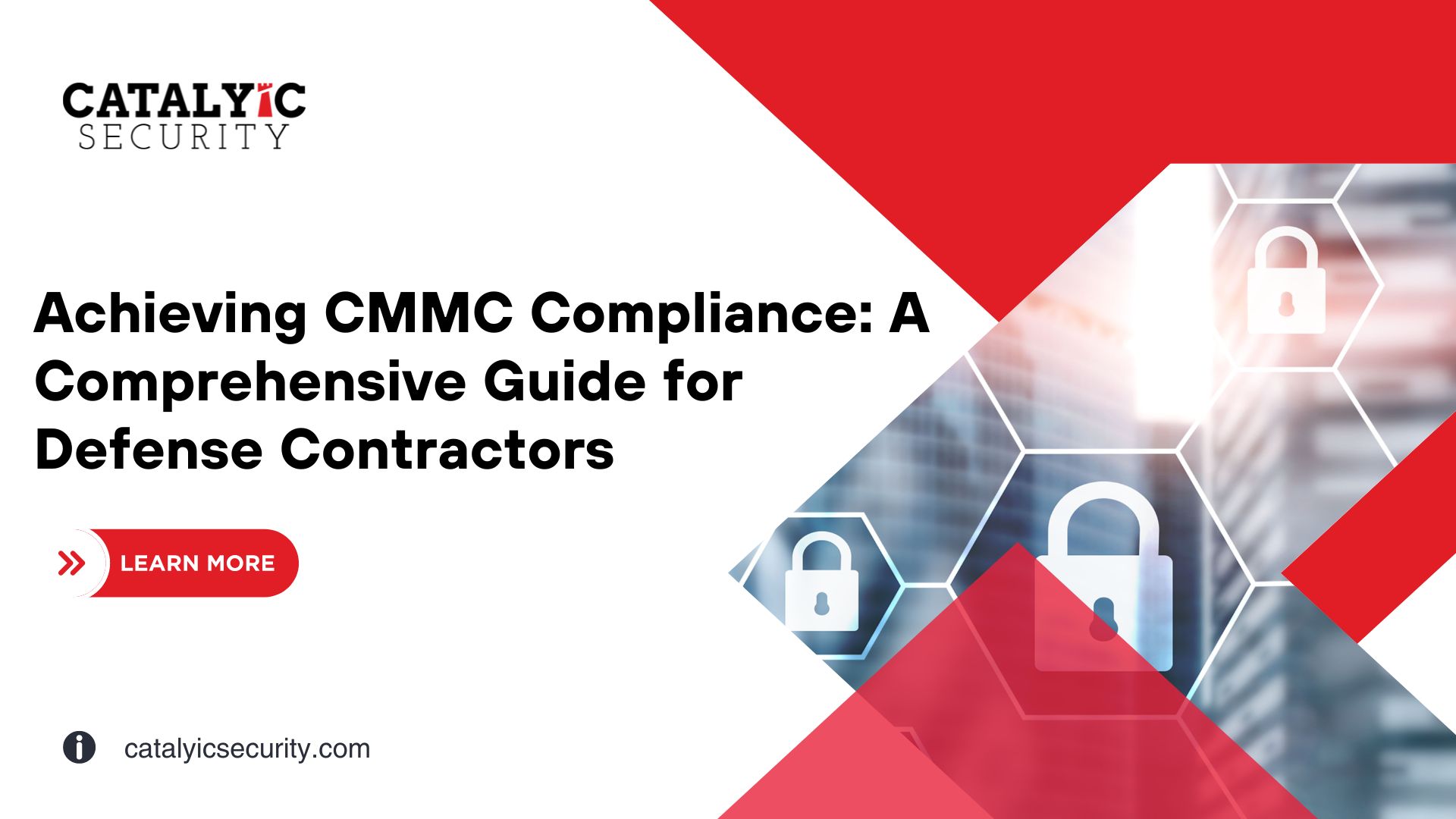Cybersecurity has become paramount, especially for Defense Industrial Base (DIB) defense contractors. The Cybersecurity Maturity Model Certification (CMMC) framework has emerged as a crucial requirement for these contractors, ensuring the protection of controlled unclassified information (CUI) and federal contract information (FCI). This blog post will provide a comprehensive guide on achieving CMMC compliance, covering its components, maturity levels, and essential steps for successful certification.
Understanding CMMC Compliance
1.1 What Is CMMC Compliance?
CMMC compliance is a cybersecurity framework that regulates defense contractors in the DIB. It aims to establish reliable and robust security practices by aligning various requirements and standards into a unified framework. By achieving CMMC compliance, defense contractors demonstrate their commitment to safeguarding sensitive information and meeting government cybersecurity requirements.
1.2 Key Components of CMMC Compliance
To better understand CMMC compliance, it’s essential to grasp its key components:
Controlled Unclassified Information (CUI) and Federal Contract Information (FCI): CMMC protects CUI and FCI, ensuring their confidentiality, integrity, and availability.
NIST Standards: The CMMC framework incorporates requirements from various NIST publications, primarily NIST Special Publication 800-171 and NIST Special Publication 800-172.
Maturity Levels: CMMC defines five maturity levels, ranging from Level 1 (Foundational) to Level 5 (Advanced). Each class builds upon the previous one, encompassing additional controls and practices.
Third-party Assessments: CMMC assessments are conducted by certified Third-Party Assessment Organizations (C3PAOs) to determine an organization’s compliance level. These assessments provide an objective evaluation of the contractor’s cybersecurity practices.
CMMC Maturity Levels
2.1 CMMC 2.0 Level 1: Foundational
CMMC Level 1 serves as the starting point for defense contractors. It focuses on implementing 15 basic safeguarding controls derived from NIST Special Publication 800-171. Level 1 certification allows contractors to handle Federal Contract Information (FCI). Contractors at this level must perform annual self-assessments or undergo audits conducted by C3PAOs to ensure compliance.
2.2 CMMC 2.0 Level 2: Advanced
Level 2 certification allows contractors to handle FCI and Controlled Unclassified Information (CUI). Level 2 builds upon Level 1 and requires the implementation of all 110 security controls specified in NIST Special Publication 800-171. Contractors at this level must undergo assessments every three years through C3PAOs or DoD-approved self-assessments.
2.3 CMMC 2.0 Level 3: Expert
Level 3 certification is designed for contractors facing significant security threats and allows handling both FCI and CUI. Level 3 introduces additional practices beyond Level 2 requirements. Contractors at this level must implement all 110 controls from NIST Special Publication 800-171 and specific controls from NIST Special Publication 800-172. Triennial assessments conducted by C3PAOs are mandatory, without exceptions.
Steps to Achieve CMMC Compliance
3.1 Assessing the Appropriate CMMC Maturity Level
To determine the suitable CMMC maturity level for your organization, consider factors such as the sensitivity of the data you handle and the contractual requirements imposed by the government. Choose the class that aligns with your organization’s needs and obligations.
3.2 Performing a CMMC Self-assessment
Before pursuing external assessments, conduct an internal self-assessment to identify gaps in your organization’s security controls and practices. Use the CMMC assessment guides and other resources to evaluate compliance with the specified requirements.
3.3 Engaging with C3PAOs for External Assessment
To achieve formal CMMC certification, engage with authorized C3PAOs for an external assessment. These organizations are certified to evaluate your cybersecurity practices and determine your compliance level. The C3PAOs will thoroughly review your security controls, policies, and procedures.
3.4 Conducting Internal Audits and Remediate Gaps
Regularly assess your organization’s vulnerabilities and non-compliant areas. Engage stakeholders and employees in the remediation process to address identified gaps effectively. This step helps strengthen your security posture and ensures continuous improvement in your cybersecurity practices.
3.5 Implementing Strong Cybersecurity Practices
Establish robust access controls, network security measures, and incident response procedures. Train your employees on cybersecurity awareness and best practices to create a security-conscious culture within your organization. By implementing strong cybersecurity practices, you enhance your defense against potential threats.
3.6 Maintaining Documentation and Evidence
Keep accurate records of your security policies, procedures, and incidents. Documentation is crucial during assessments and serves as evidence of your compliance efforts. Maintain a centralized repository to store and organize these documents efficiently.
Conclusion:
Achieving CMMC compliance is vital for defense contractors to safeguard sensitive information and meet government requirements. By prioritizing cybersecurity and partnering with authorized C3PAOs, defense contractors can bolster their security posture and contribute to the overall protection of the Defense Industrial Base. By understanding the components, maturity levels, and steps outlined in this comprehensive guide, organizations can streamline their path to certification.

